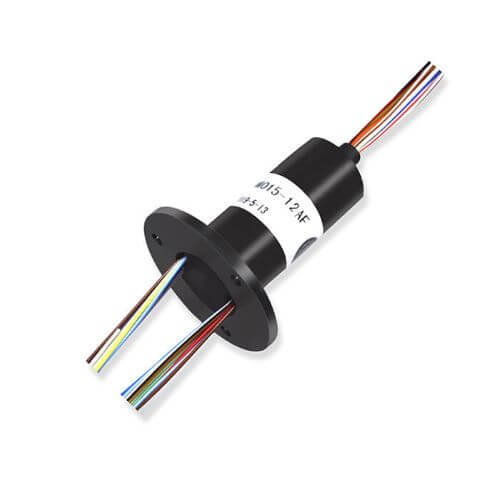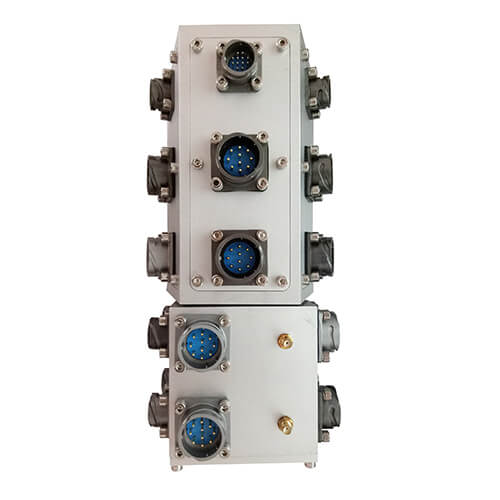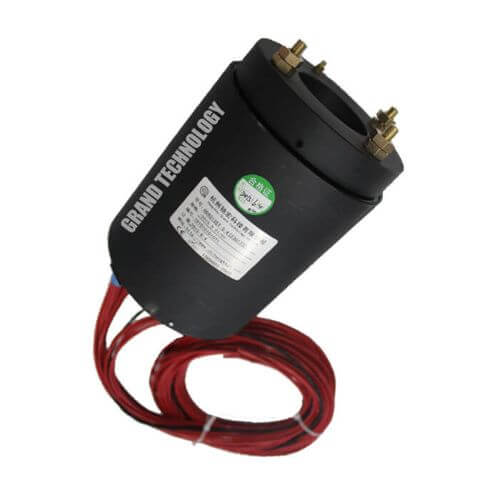This article aims to provide an extensive understanding of standard capsule slip rings, walking you through their definition, structure, functionalism, benefits, and applications. Lastly, we offer guidance on what to consider when selecting these rings and how to maintain them, gearing you up with the knowledge you need.
Introduction to Standard Capsule Slip Rings
Standard capsule slip rings are a quintessential component in the smooth functioning of many modern-day devices and equipment. These electromechanical gadgets form the backbone of various critical operations where they transmit power and electrical signals from a fixed to a rotating part. This specific capability is fundamental to operating a wide range of mechanisms from wind turbines to medical imaging machines.
Their design reflects a compelling blend of precision, durability, and technology, resulting in a device that’s compact yet powerful. They are meticulously engineered to serve numerous applications, being predominantly used in scenarios where twist-free, continuous signal transmission is needed between stationary and rotating structures.
The inherent importance of standard capsule slip ring is underscored by their broad spectrum of applications. Industries such as robotics, aerospace, renewable energy, and communication systems heavily rely on them to ensure flawless signal transmission under various environmental conditions. They are integral to the seamless operation of video surveillance, computer devices, radars, satellites, medical equipment, and much more.
Given this wide-ranging applicability and functionality, understanding standard capsule slip rings, their structure, and mechanism becomes paramount for those involved in sectors where these components are frequently employed. Equipped with this knowledge, users can optimally leverage their benefits, ensure their long-term maintenance, and make informed decisions when selecting the appropriate type of slip ring for their specific needs.

What is a Standard Capsule Slip Ring?
Seamlessly bridging the gap between stationary and rotating components in an array of electronic devices, a standard capsule slip ring is an electromechanical device designed for the efficient transmission of power and electrical signals. The term “capsule” references its compact and encapsulated design that encloses the slip ring, safeguarding it from external elements and potential damage while ensuring it remains small and lightweight.
These miniature powerhouses are quite remarkable – they permit unrestrained, 360-degree rotation of power and signals. This ability to ensure a continuous flow of electricity without tangling the wires is vital in many applications, such as wind turbines where the nacelle must rotate freely to face the wind, or in revolving doors and monitor stands that require power for sensing and data transmission while rotating.
The distinguishing factor between standard capsule slip rings and other variants lies in the specific design and application focus. For instance, pancake slip rings are designed for systems with height restrictions, while through-hole slip rings are applied when a clear passage in the center is required for further assembly or light passage.
Compared to these, standard capsule slip rings are ideally suited for tasks requiring limited circuits, lower current, and space conservation. Their design usually incorporates gold contacts for the most reliable and low-noise signal and ensures a long life with low electrical noise. Compact, versatile, and robust – these slip rings are a ubiquitous solution catering to a diverse set of needs across multiple industries.
Standard Capsule Slip Ring Key Components and Structure
A standard capsule slip ring is characterized by its internally robust yet externally compact design, facilitating its diverse functional capabilities. Understanding its structure requires a deep dive into its key components, each of which plays a critical role in ensuring smooth, uninterrupted electric signal transmission.
At its core are the inner and outer parts. The inner part, composed of steel bearings and a shaft, forms the rotating structure. This is surrounded by an encapsulated shell or housing— often made from engineering plastic—that protects the entire assembly from dust, vibration, and other external elements. This comprises the outer stationary part. Together, these form the basic structure of the capsule slip ring, allowing it to transmit power or signals as the inner part rotates relative to the stationary outer part.
The contact materials are another crucial component. These materials, often constructed from precious metals like gold or silver, ensure reliable electrical connection between the stationary and rotating parts. The choice of contact material can vastly influence the performance of the slip ring in terms of its electrical noise, wear rate, and lifespan. Gold is often preferred for its high conductivity, corrosion resistance, and longevity.
Finally, the conductive rings play a pivotal role. Radially arranged around the shaft, these rings effectively transmit the electrical signals from the stationary interface (brushes) to the rotating part. Each conductive ring transports a different signal or power line, allowing for multiple signals to be transmitted simultaneously without interference.
The fascinating design and structure of standard capsule slip rings thus effectively marry durability and efficiency, offering a reliable solution for power and signal transmission in a myriad of applications and industries.
Standard Capsule Slip Ring Functional Mechanism
A standard capsule slip ring employs a straightforward yet effective mechanism to accomplish its key function: transmitting electrical signals from a stationary structure to a rotating one. These devices ensure power, data signals, or both, can be transmitted unhindered, even as a component within the system is continuously rotating.
The slip ring’s operation begins with the connection of the power source or data-producing device to the in-built conductive rings situated in the stationary part. When the electrical signals reach the conductive rings, they are then transmitted to the precious metal brushes that slide over the rings. These brushes, in turn, are connected to the rotating device or equipment needing the power or signal. Therefore, as the device starts to rotate, the brush and the rotating part remain in constant touch thanks to the slip ring, ensuring an uninterrupted transmission of signals.
What makes a capsule slip ring incredibly versatile is its ability to transmit a variety of signals. Besides typical power signals, they can effectively handle data signals, control signals, and even complex encoded data streams without disruption. This multi-channel capability allows modern capsule slip rings to accommodate a range of requirements— from simple power connections to sophisticated data transfer tasks.
Moreover, because of their precise design and use of high-quality contact materials, they can effectively reduce signal interference during transmission and maintain a stable signal transmission even under high-speed rotation. This makes them an invaluable asset in industries where any lapse in signal transmission can result in operational inefficiencies, downtime, or, in more critical cases, drastic consequences.
Standard Capsule Slip Ring Advantages and Benefits
Possessing numerous advantageous properties, standard capsule slip rings are held in high regard across a multitude of industries for their compact size, impressive performance, and overall dependability. A deeper exploration of their qualities elucidates why they are often the component of choice in a myriad of applications.
A standout feature of the standard capsule slip ring is its compact form factor. Designed to be encapsulated in a small package, these slip rings are great space savers, making them an ideal fit for applications where space is a premium.
Mechanically, standard capsule slip rings exhibit low friction during operation. The specially designed brushes glide smoothly over the conductive rings, minimizing wear and thereby extending the lifespan of the device. This also translates to lower noise during operation, an attribute appreciated in environments where noise reduction is paramount.
In terms of signal quality, these slip rings excel by offering high-quality transmission with minimal interference. With the ability to handle a variety of signals from power to complex data streams, these slip rings perform excellently even at high rotational speeds. The consistency and reliability of signal translation they afford are crucial in applications where signal integrity cannot be compromised.
Lastly, despite their sophisticated functionality, standard capsule slip rings are often a breeze to install and maintain. Their design often allows for simple mounting and demounting without the requirement for specialized tools or extended downtimes. Regular maintenance is also straightforward, largely revolving around ensuring that the components are clean to minimize wear and tear.
Summing up, the smallest components can often play the largest roles. The standard capsule slip ring, with its compactness, design efficiency, high signal quality, minimal interference, easy installation, and maintenance, has become a quintessential part of various facets of modern technology.
Standard Capsule Slip Ring Applications and Industries
Standard capsule slip rings are found in a wide range of applications and industries, illustrating their versatility and immense utility. Let’s delve into some areas where their use is prevalent.
In Robotics and Automation, the 360-degree continuous rotation capability of capsule slip rings proves essential. These devices offer a reliable solution for power transmission and signal communication in the rotating parts of automation equipment and robotic arms. Their ability to manage multiple signal lines concurrently is a boon in such complex systems, ensuring smooth and coherent operations.
Medical Equipment, such as CT scanners and MRI machines, heavily rely on capsule slip rings. They contribute to the precise rotation of scanning components while maintaining uninterrupted high-quality data signals or power. Their compact size, reliable performance, and low interference offer crucial advantages in this field where precision and accuracy are of utmost importance.
The Wind Turbine and Renewable Energy sector exploits the attributes of capsule slip rings in managing continuous power or data transmission from the rotating blades to the stationary components. This is vital in wind turbines to maintain consistent energy output irrespective of the nacelle’s orientation changes concerning the wind.

In Video Surveillance and Communication Systems, capsule slip rings allow for unrestricted, continuous rotation of surveillance cameras and antennas while maintaining constant power supply and data transfer. This results in efficient 360-degree surveillance, critical in many security applications, and seamless data communication.
Finally, the Military and Aerospace industries employ standard capsule slip rings in a multitude of applications, including radar systems, gun turrets, and satellite systems. Providing reliable, uninterrupted power, and high-fidelity signal transmissions, even in harsh conditions, these slip rings contribute greatly to the efficiency and dependability required in these high-stakes scenarios.

Thus, standard capsule slip rings serve as a common thread across diverse industries, playing a pivotal role in the efficient functioning of various critical systems, further emphasizing their indispensable nature in modern technology.
Key Factors to Consider When Choosing a Standard Capsule Slip Ring
Selecting a suitable standard capsule slip ring requires careful consideration of various factors, given the critical role this component plays in numerous applications. These factors range from the operating environment to certifications and compliance, each influencing the slip ring’s efficiency, durability, and overall performance.
The Operating Environment is the first to consider when choosing a standard capsule slip ring. Factors such as temperature, humidity, dust, and vibration need to be assessed comprehensively. Too high or too low temperatures, excessive moisture, heavy dust particles, or intense vibrations can impact the performance and lifespan of the slip ring. Selection should thus be tailored to withstand the specific environmental conditions it is expected to function.
Next are the Electrical and Mechanical Requirements. Variables such as the amount of current it should carry, the maximum RPM it should handle, and the dimensions to fit the current system all come into consideration. The chosen slip ring should be able to meet these requirements without compromising its performance or lifespan.
Signal Transmission Types and Speeds are equally critical. Whether it’s simple power signals or complex data streams, the capsule slip ring should effectively transmit these signals without interference. Transmission speed is also vital, especially in time-critical applications where any lag can lead to significant operational inefficiencies.
Compatibility with the Existing System is also important. The chosen slip ring should integrate smoothly within the existing assembly or system, preserving its working and function while adding to its capabilities.
Relevance should also be given to the Material Quality and Manufacturing Standards. Given their impact on performance and life, the materials used in the slip ring and the standards followed in manufacturing them should be of the highest quality. This ensures the slip ring can deliver consistent, reliable performance over an extended period.
Lastly, ensure that the chosen slip ring complies with various Certifications and Standards such as RoHS, CE, and UL. Compliance speaks volumes about the safety and reliability of the device and testifies to the manufacturer’s commitment to providing a quality product.
In conclusion, a thoughtful evaluation based on these criteria ensures the chosen standard capsule slip ring drives optimal performance and reliability in the given application.
Standard Capsule Slip Ring Maintenance and Troubleshooting Tips
While standard capsule slip rings are designed to be durable and high-performing, they do benefit from proper maintenance and swift troubleshooting. Here are some best practices and common issues:
Best Practices for Maintaining Standard Capsule Slip Rings
- Routine Inspection – Regularly inspect the slip ring for any signs of wear and tear, overheating, charring, corrosion, or loose connections.
- Clean Contacts Regularly – The contacts of the slip ring should be kept clean and rust-free. Any accumulation of dust, grime, or corrosion on the surfaces can disrupt the electrical connection, leading to poor signal quality or power loss.
- Avoid Extreme Conditions – While slip rings are designed to withstand a variety of environments, exposure to extreme heat, cold, humidity, vibration, or abrasive materials can shorten their lifespan. Ensure it is sheltered from harsh conditions as much as possible.
- Regular Lubrication – Lubrication reduces the mechanical wear on moving parts, enhancing the lifespan of the slip ring. Use the manufacturer-recommended lubricant.
- Follow Manufacturer Guidelines – Always adhere to the maintenance recommendations provided by the manufacturer in the slip ring manual or specifications list.
Common Issues and How to Resolve Them
- Signal Interruptions or Reduction – If the slip ring experiences intermittent signal loss or reduced transmission, check for signs of corrosion or wear on the contacts. Cleaning the contacts or replacing the worn-out parts may resolve this issue.
- Overheating – If the slip ring gets unusually hot, it can be due to overcurrent or poor contact. Inspect the electrical connections, reduce the load if needed, and ensure the slip ring is being used within its specified current rating.
- Noisy Operation – Some noise is to be expected during operation, but excessive noise can indicate a problem. Investigate the source, ensure proper lubrication, or seek professional help if the noise persists.
- Failure to Rotate – If the slip ring is not rotating, check for any mechanical obstructions. Ensure the assembly is correctly mounted and there are no loose components.
Remember, even with diligent maintenance and troubleshooting repair works should be carried out by professionals to avoid potential damages or safety risks. Always reach out to the manufacturer or a qualified technician for assistance.
Conclusion
Recapping the essence of standard capsule slip rings and their applications, we venture into future trends and the pivotal role they’ll continue to play in modern technology.
Though the value of these detailed insights into standard capsule slip rings becomes more apparent with implementation, it’s undeniable they are a technological marvel with an array of uses in various industries. Prompting a comprehensive look into their world helps demystify this complex, yet crucial, function of these small components.
FAQs about Standard Capsule Slip Ring
Q: What is a standard capsule slip ring?
A: A standard capsule slip ring is a device designed to transmit electrical signals from a stationary structure to a rotating component. It allows for continuous, uninterrupted power supply and signal transmission even when a part of the system is moving in a circular motion.
Q: Where are standard capsule slip rings commonly used?
A: They are found in numerous applications across varied industries. Commonly, they are used in robotics and automation, medical equipment like CT scanners, wind turbines, video surveillance systems, and in the military and aerospace industry.
Q: How do capsule slip rings handle signal interference?
A: Their precise design, use of high-quality contact materials, and encapsulated structure enable them to effectively reduce signal interference during transmission. They maintain stable signal transmission even under high-speed rotation.
Q: Can the slip ring accommodate different signal types?
A: Yes, in addition to regular power signals, standard capsule slip rings can effectively handle data signals, control signals, and even complex encoded data streams without disruption.
Q: How hard is it to install or maintain a standard capsule slip ring?
A: Despite their sophisticated functionality, standard capsule slip rings are often easy to install and maintain. Most designs allow for simple mounting and demounting without the need for specialized tools. Regular maintenance is straightforward, typically involving routine cleaning to minimize wear and tear.
Q: What factors should I consider while choosing a standard capsule slip ring?
A: Key factors include your operating environment, specific electrical and mechanical requirements, kinds of signals to be transmitted and their speeds, compatibility with existing systems, quality of materials used and manufacturing standards, and relevant certifications and compliance.
Q: Do standard capsule slip rings generate a lot of noise?
A: Due to their make and low-friction feature, capsule slip rings generate minimal noise during operation. This makes them a suitable choice for environments where noise must be kept to a minimum.
See What We Can Do

